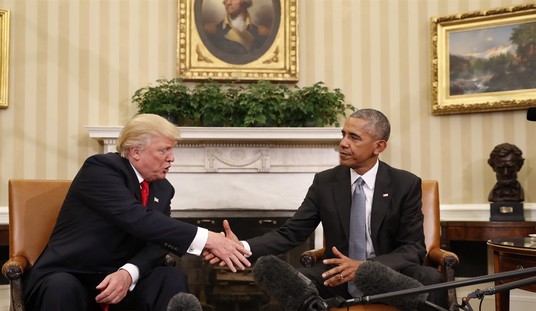Two famous sea-tragedies, the first of which happened nearly a hundred years ago and the second of which occurred at the start of the Second World War, have been so painstakingly examined by generations of historical enthusiasts that the vast and sustained public interest has become a saga in itself. Hundreds of technical experts and millions of dollars have been spent ostensibly to answer questions which can have no possible earthly relevance: how precisely did the Titanic sink and what caused the catastrophic destruction of the HMS Hood during its fateful encounter with the Bismarck in the Denmark Strait in May, 1941? It’s hard to avoid thinking the excitement of the search, rather than the answers themselves are the object of this vast popular effort.
The curious desire to mentally travel to other times and places, whether past or future, terrestrial or aquatic, sublunar or intergalactic, historical or fantastic is exemplified by efforts which range from re-enacting historical armies to Star Trek conventions. A surprising number of people live for the weekend opportunity to dress up like a Union infantryman or anxiously await the arrival of some arcane British Admiralty archival transcript, sometimes ordered at the cost of hundreds of dollars for the chance to vicariously experience, however briefly, a moment that may never have been.
Never been? Ironically, one of the byproducts of popular interest in history has been to show how tenative much of “real” history is. Only after Robert Ballard found the wreck of the Titanic was it realized that the established story of its sinking had actually been wrong; that the ship broke in half as it sank (whether on the surface as shown in the James Cameron movie or on the way down I leave to the experts); that the Night to Remember had been misremembered. Similarly, what “really happened” in the Battle of the Denmark Strait is probably unrecoverable, however we try to grasp it and no one is more responsible for that state of affairs than the legions of enthusiasts who have tried to puzzle out what caused the HMS Hood to blow up, and who by way of seeking an answer, have made themselves experts in interwar British ship design, propellant stability, gun drill, armor design, explosive physics and 1930s electronics. It is no exaggeration to say that the level of expert debate on the sinking of HMS Hood today is far higher than at the official Admiralty inquest which examined why the ship was lost. In 1941 there was little time but to seek answers to the most pressing questions. Today there are people who specialize in examining the menus of the RMS Titanic and the Christmas dinners of the HMS Hood. And yet more data brought us no certainty; only more questions.
All this is to the good; but another consequence of our frequent vicarious sojourns to the past and the future is that there are so many versions of both that we are now uncertain about where we stand in relationship to our own part in the drama. Where you are today depends in part on the answers you give to the just some of these questions: who was on the grassy knoll that day in 1963? Did the Twin Towers collapse from the effect of burning jet fuel or a controlled detonation? Was Winston Churchill, rather than Adolph Hitler, really the villain of the Second World War? Shouldn’t Columbus Day be an occasion of mourning rather than national celebration? Did Christ exist? Will we ever return to the moon?
Once upon a time the responses to all these questions would have been clear in the popular mind. Today along with a hundred different answers come a hundred different histories. Maybe the price of abandoning myth in order to travel where No Man Has Gone Before, via our home entertainment centers or Internet terminals , is that we have lost our place in our own story.
 History is often complex and hard to grasp. Over the last few days I’ve been able to observe one news event, the Pope’s visit to Sydney for World Youth Day, at first hand. The arrival of tens of thousands of young people from all over the world forced ethnic communities to find lodgings, provide food, transportation and even entertainment for those who, apart from religious and national connections, were total strangers. A single “event” is a really the sum of a million individual stories held together by a date and a convenient narrative. Most of those stories will be lost to history yet they were arguably the event itself, collectively speaking. Even eyewitness accounts will produce conflicting results. I was invited down to Sydney Harbor bridge to witness the scheduled Papal fluvial procession and was surprised to find, overhearing the conversations of the crowd, that many never had a clue which boat the Pontiff was on. Armed with a diagram of the scheduled route, a pair of Nikon 8x binoculars and a general knowledge of how these things are done, I had no trouble seeing Benedict sail by on that gloriously pleasant afternoon. But for many observers, Benedict XVI was seen to be in this or that barge, standing beneath this or that banner when no such thing had taken place. Or had it? In the coming years the memory of events that afternoon will be formed not so much by what happened, which no one in the future can reconstruct, but by what is remembered. What really happened? And who wants to know?
History is often complex and hard to grasp. Over the last few days I’ve been able to observe one news event, the Pope’s visit to Sydney for World Youth Day, at first hand. The arrival of tens of thousands of young people from all over the world forced ethnic communities to find lodgings, provide food, transportation and even entertainment for those who, apart from religious and national connections, were total strangers. A single “event” is a really the sum of a million individual stories held together by a date and a convenient narrative. Most of those stories will be lost to history yet they were arguably the event itself, collectively speaking. Even eyewitness accounts will produce conflicting results. I was invited down to Sydney Harbor bridge to witness the scheduled Papal fluvial procession and was surprised to find, overhearing the conversations of the crowd, that many never had a clue which boat the Pontiff was on. Armed with a diagram of the scheduled route, a pair of Nikon 8x binoculars and a general knowledge of how these things are done, I had no trouble seeing Benedict sail by on that gloriously pleasant afternoon. But for many observers, Benedict XVI was seen to be in this or that barge, standing beneath this or that banner when no such thing had taken place. Or had it? In the coming years the memory of events that afternoon will be formed not so much by what happened, which no one in the future can reconstruct, but by what is remembered. What really happened? And who wants to know?










Join the conversation as a VIP Member